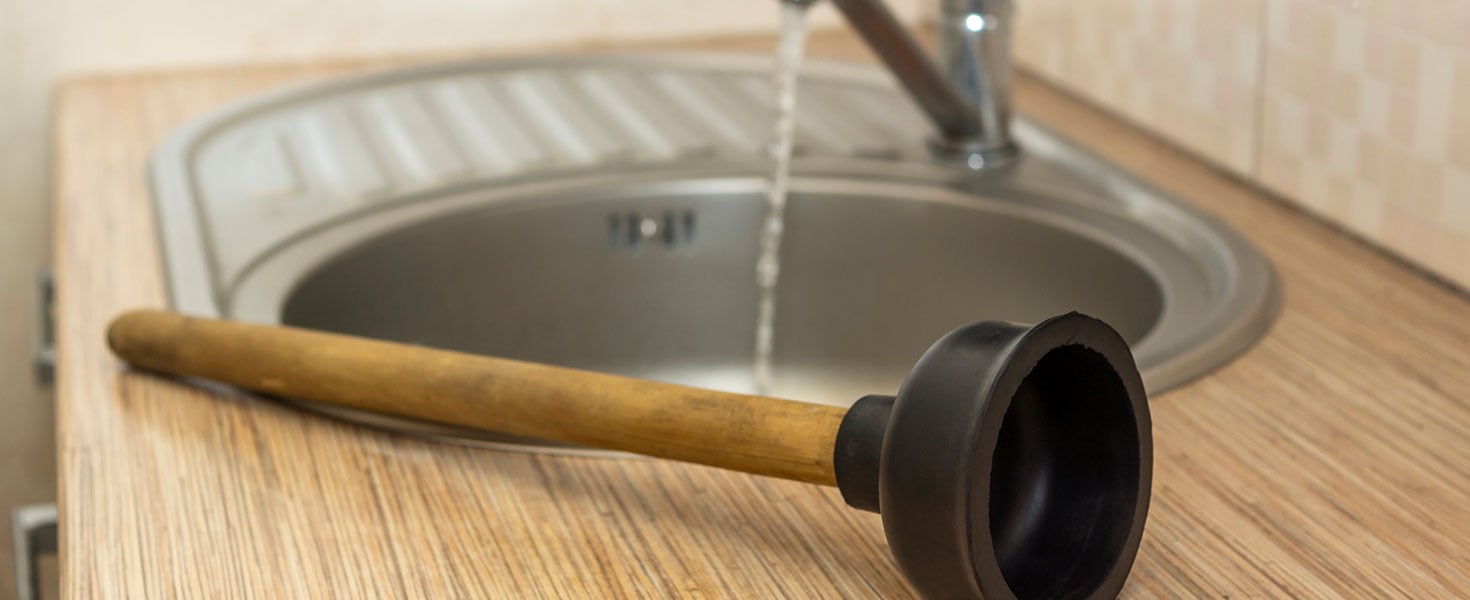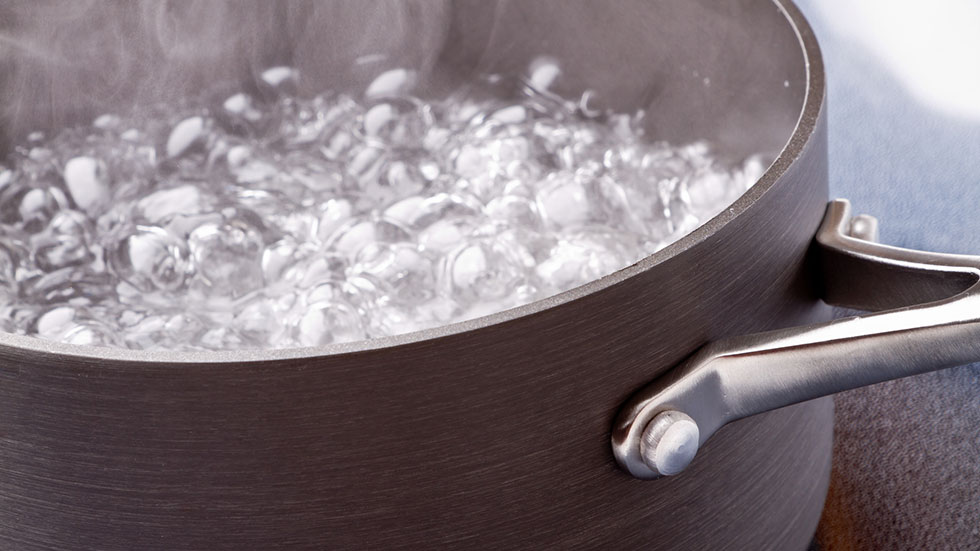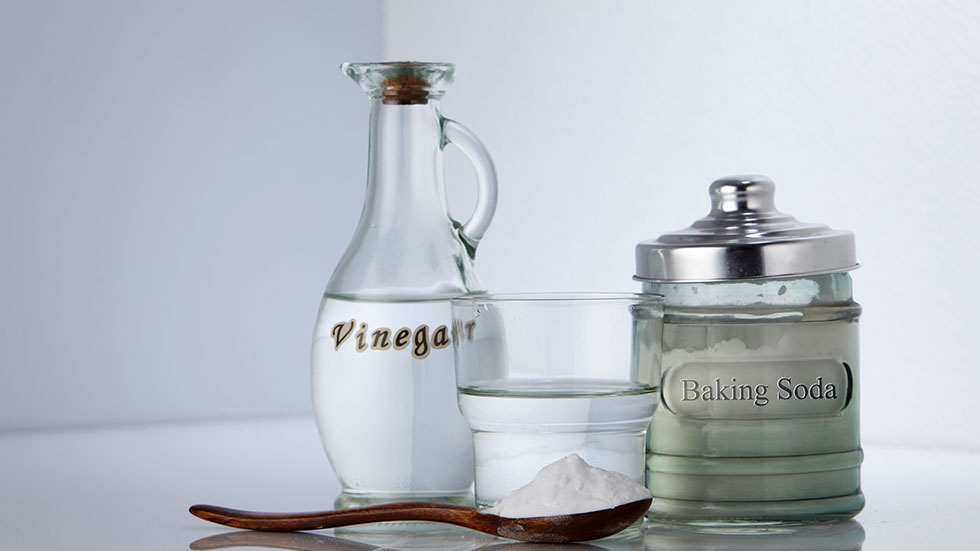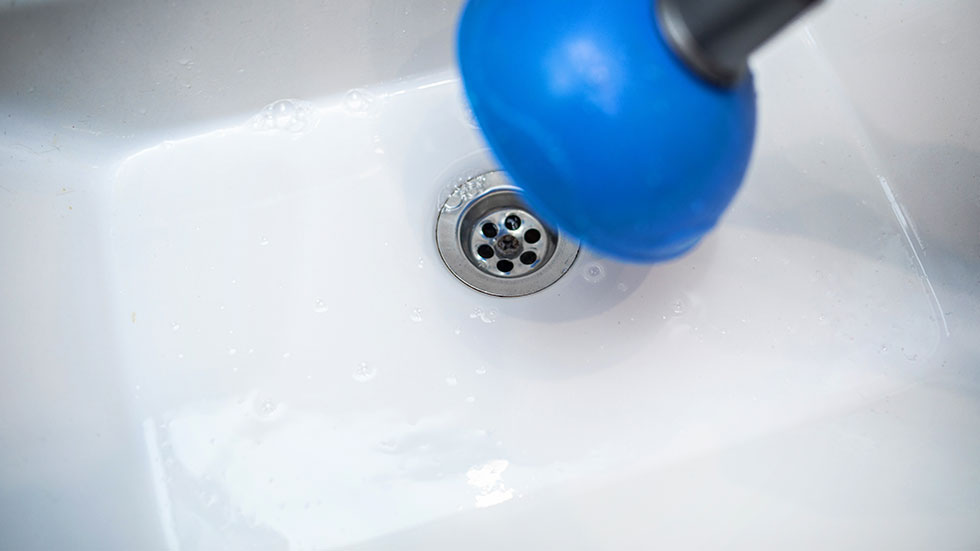

Many of us can relate to this sinking feeling. While cleaning up before a dinner party, the soap water just swirls around the sink, going nowhere. Or, while showering, you notice that the water is past your ankles. The level keeps rising—and so does your anxiety.
Before reaching for a chemical solution, try these non-chemical methods. Although the strategies aren’t toxic, proceed cautiously, as you don’t want to exacerbate the problem. In general, you should avoid putting damaging items down any drain. And, when in doubt, call a pro.

TRY BOILING WATER
Pouring a small amount of boiling water intermittently into the drain may dislodge the clog, according to Martens Plumbing & Heating in Mukwonago, Wisconsin. Don’t dump all the water in at once; ensure the hot water is draining.
This method does have a risk. The hot water might melt some of the gunk and push it farther down the pipe, where it hardens into a second clog, notes Michael Berry, owner of Folsom Plumbing Company in Folsom, California. Hot water “can also cause pipes to expand and contract, leading to leaks,” he says.

USE BAKING SODA AND VINEGAR
Judging by social media, a mix of baking soda and vinegar is a cure-all for a sink clog. The combination creates a gentle bubbly eruption that theoretically dislodges the mass.
“The truth is that it won’t work unless you add hot water,” says Steve Evans, owner of Memphis Maids, a housecleaning service.
“When you mix baking soda and white vinegar, the effect is certainly visually interesting, but it doesn’t mean that it’s going to be a miracle,” he says.
Hot water is the key ingredient, he maintains. Pour hot water down the drain first, then add the mix, followed by more hot water.
As for the baking soda and vinegar recipe, Martens Plumbing & Heating recommends using one-third cup of each.
MIX BAKING SODA AND SALT
For this recipe, you’ll need a half-cup each of baking soda and salt. Mix these ingredients, pour them in the drain, wait 15 minutes, and follow with boiling water.
Use this method sparingly, as salt is not good for your pipes, Berry says.

PULL OUT THE PLUNGER
A plunger isn’t just for toilets—you can use it on most drains, Berry says. “If the clog is caused by a buildup of hair or soap scum, a plunger may be all you need.”
The plunger uses suction to break up the clog, not ram it through the pipe, explains maintenance technician Glen Garza, a consultant for the web site The Project Girl. Use a plunger that’s large enough for the drain, and don’t use too much force.

CHECK THE P-TRAP
The U-shaped drain pipe under your bathroom and kitchen sinks is removable. First, place a pan or bucket underneath to catch water or debris. Next, unfasten the p-trap and clear any clogs. You can even insert a drain snake into the pipe.
SNAG THE CLOG
In a pinch, use a clothes hanger with a hook on the end to grab a mass of hair and soap residue. A more professional approach involves using a drain snake. Once you have reached the clog, the end of the snake grabs the material for removal. Larger drains require an auger or metal snake with a crank.
“It should be inserted into the drain and moved along until it reaches the obstruction,” says Nathan Sanders, CEO of Plumbing Navigator, a blog that offers solutions to typical tenant and homeowner questions.
You can use flexible drain snakes, available on Amazon, regularly to keep your pipes clean and remove hair before it can clog the pipes.
